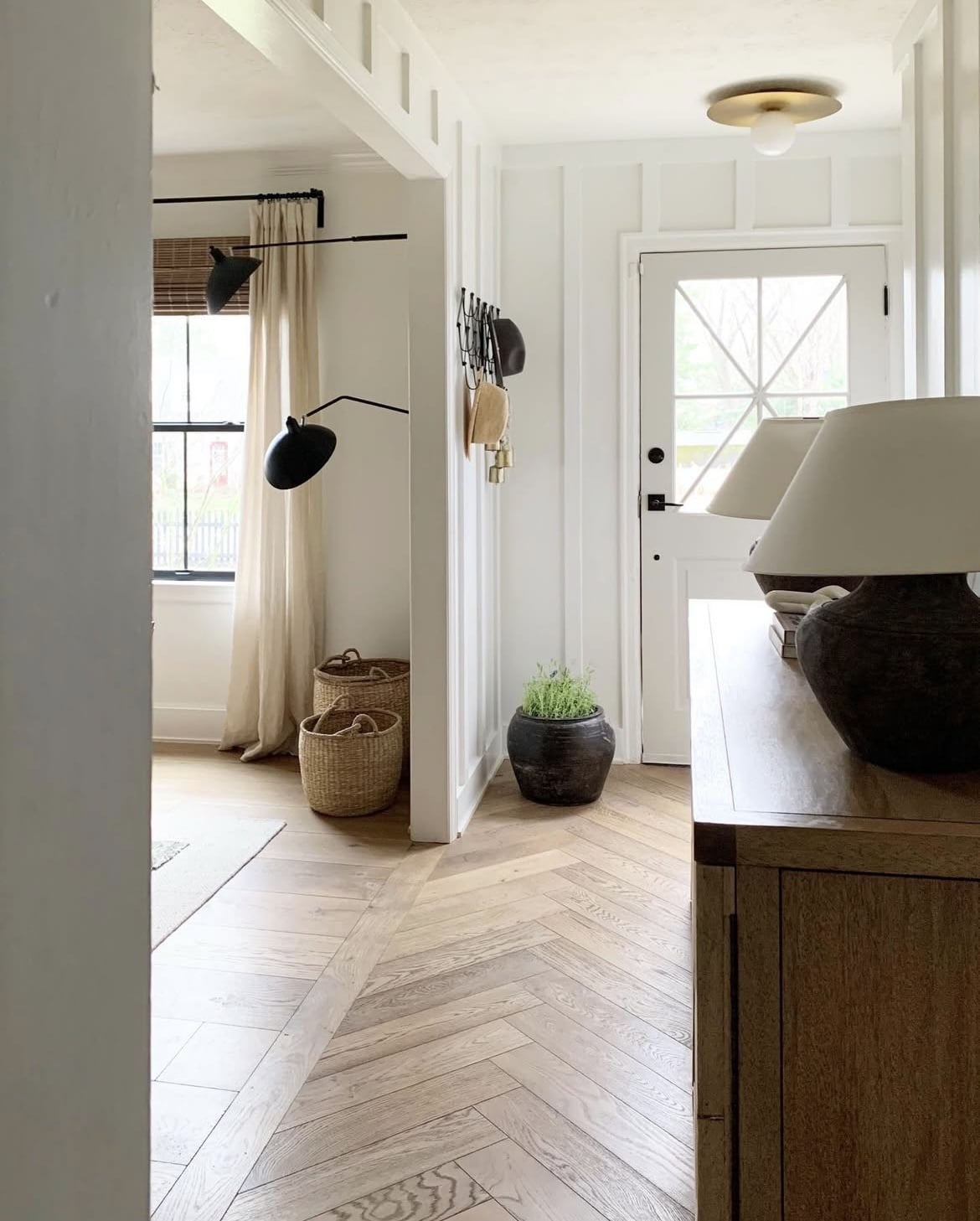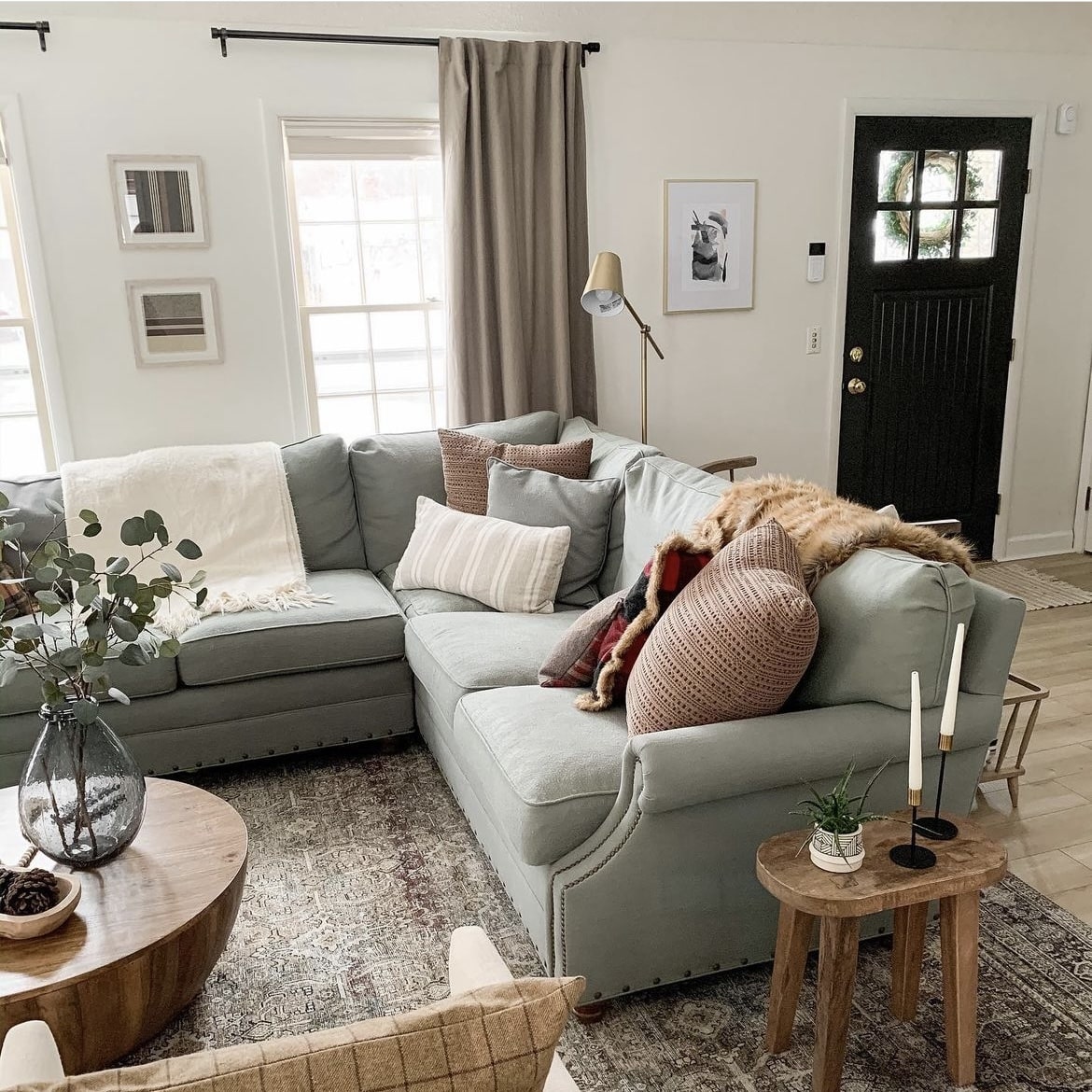
An entryway sets the tone for an entire home so it’s important to get it right. Avoid your entryway feeling cluttered and instead, focus on making it a warm and welcoming space that will make you feel at ease.
If your hallway directly leads on to your living area then we’ve got you covered. We’ve lovingly put together some of our favourite decorating tips to help you create an inviting entryway that feels distinctive from your living area.
25 Inviting Front Door Entryway Into Living Room Ideas
1.Create An Airy Aesthetic With An Arched Entryway
Entryways that lead on to living rooms have a beautiful flow but try to keep the space feeling light and bright by removing any connecting doors.
Take inspiration from the entryway pictured below and create an arch between the two spaces. It’s not only an interesting architectural feature but looks cool and contemporary, too.
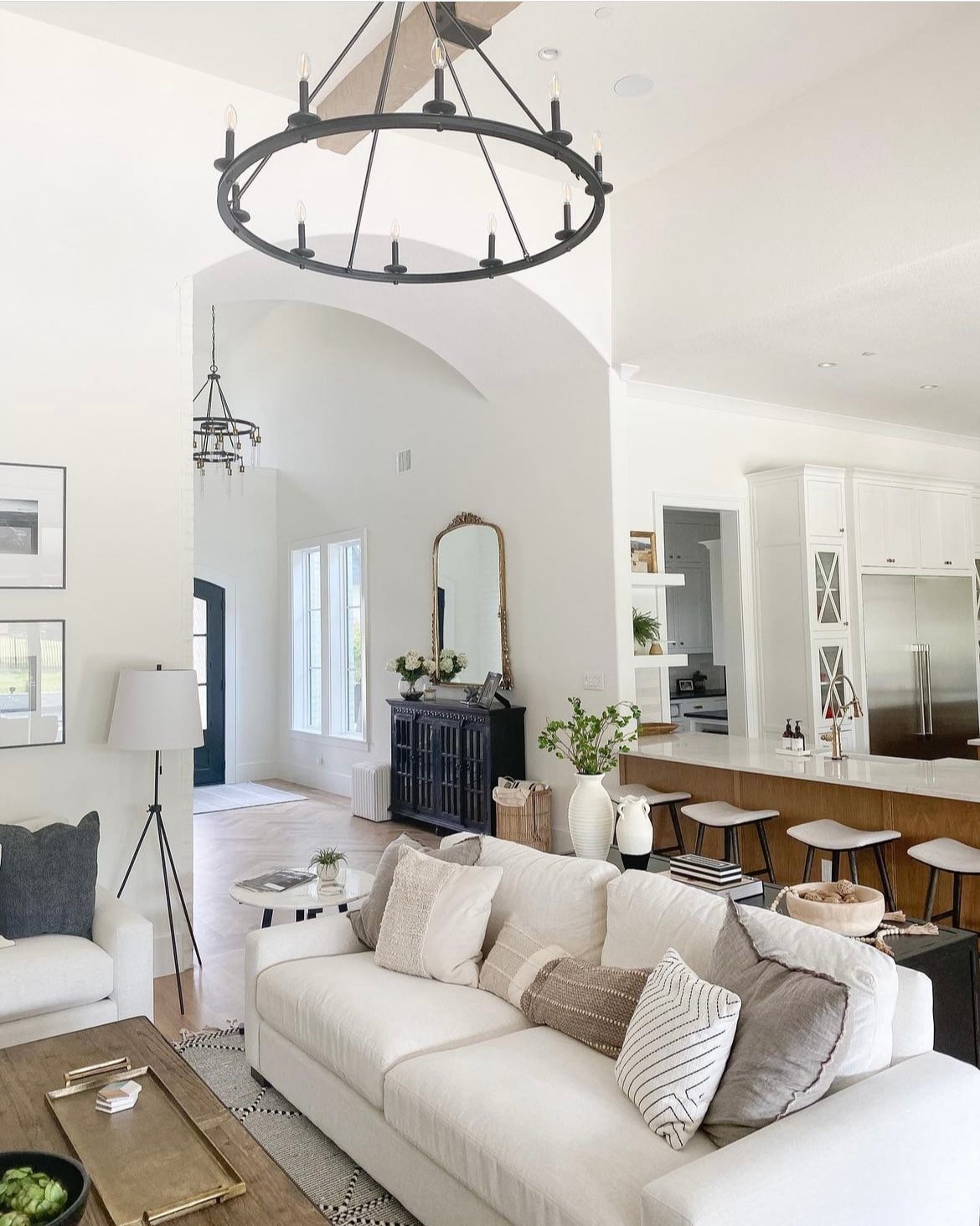
2. Use An Area Rug To Signify A Boundary In The Space
Open plan spaces are a blessing but it’s important to make a distinction from one space to another.
A great way of doing this is to use a rug to zone off certain areas. Use a door mat or runner in your entryway then frame your living area with a large fluffy rug, making it feel warm and cosy. Just remember to size up! A rug too small will make the space feel even more inferior. The rug should comfortably sit underneath the legs of all the furniture you want to sit on it.

3. Divide The Entryway And The Living Room With A Side Table
Creating visual barriers is the best way of separating an entryway and a living space if there isn’t an obvious divide.
A small piece of furniture such as a side table or even console table will break up the area without taking up too much floor space.
Once in place, style it to perfection so that when you enter the room, your first view isn’t the backside of an empty piece of furniture.

4. Create A Contrast With A Defining, Black Front Door
If you haven’t got the space to physically separate your entryway and living area, make obvious distinctions by using paint and decorating techniques.
Paint your front door a bold colour to make a statement. A black front door contrasted with a white interior is a beautiful juxtaposition.

5. Use A Vaulted Ceiling To Draw The Eye Up And Through The Space
Lacking floor space but your home is blessed with high ceilings? Use this height to your advantage.
A vaulted ceiling will draw the eye upwards, meaning you won’t be restricted by the limited floor space below. Don’t let the ceiling be an afterthought in the design, shiplap panelling adds extra character, pulling you seamlessly through the entryway into the living room.

6. Add A Glass Front Door For Plenty of Light Flow
If your entryway leads straight into your living room, making sure there’s lots of light available is vital.
A great hack for this is investing in a front door that has a glass front. Choose a design that is fluted so it still offers a level of privacy but looks effortlessly stylish.

7. Position Furniture Around An Area Rug To Set A Zoned Living Space
Use furniture as a visual barrier to frame a living space. If you don’t have walls or architectural features to define a space, use furniture to create the same effect.
The great thing about this is you can always move furniture around so you can play with different layouts. Using a large area rug as an anchor point is the ideal starting point for moving chairs and coffee tables into place.

8. Use A Console Table To Provide A Visual Touch Point
Another way of using furniture to define a space is with a console table.
This versatile piece of furniture is synonymous with entryways and offers vital storage and somewhere to put down your belongings when you’re rushing in and out of the door.
Don’t miss the opportunity to elevate the entryway more by adding a large mirror above it. It will bounce around what light is available creating a more open and light space.

9. Use Wall Panelling To Add Contrast & Depth To Define The Entryway
Think outside the box when it comes to decorating your entryway and separate it from your living room using fun and quirky techniques.
Wall panelling is bang on trend and elevates any space. Use wall panelling in your hallway as a talking point and nail hooks into it as a savvy storage solution.

10. Create A Feature Wall Leading In With Wallpaper To Divide The Two Spaces
Make a feature out of your entryway and don’t let it fade into the background by hanging statement wallpaper.
If there’s a wallpaper design that you’ve always loved and have never figured out the perfect place to use it then hanging it in your entryway could be the ideal solution. It breaks up the monotony of a singular colour and adds real character to a space like this.

11. Create A Cosy Square Layout
Consider certain shapes and dimensions when deciding on your layout.
A square layout feels very cosy and can create a cocoon-like effect. Facing your sofa away from the front door will immediately separate the two spaces rather than it feeling like a landing slip as you enter the door!

12. Use A Sofa To Divide The Entryway
Using a sofa to divide the two spaces is an effective method but it can feel uninviting.
Adding a console table behind your sofa provides a better divide and visual interest. Style it to add further interest, adding a round mirror to the wall above it to add a touch of softness.

13. Use Colour To Create A Clever Divide of Spaces
Colour is a wonderful thing and has many clever ways of tricking the eye in the home.
Use different colours or shades of the same colour to separate your entryway from your living area. Bright pops of colour in your living space will immediately draw the eye away from your front door.

14. Divide The Entryway With Glass Furniture
Decided that a console table is the perfect piece of furniture for your entryway but not sure which design to go for?
If you’re lacking space, glass furniture is a wonderful way of still giving you ample amounts of storage but letting the light travel through, making your space appear bigger and more open.

15. Use Similar Colours Throughout For A Cohesive Pull Through The Space
If creating a distinct divide doesn’t quite work for your space, try and make it feel cohesive instead by sticking to one colour palette.
For example, use an array of muted tones to decorate your space. Sage green, beige, dusky pink and mustard yellow are all stylish colours that will make your entryway feel consistent.

16. Choose An All-White Scheme For An Open-Plan Space
The oldest trick in the book for making a space feel more open is to white-wash it. Keeping the walls white and choosing furniture in light colours will make your living area feel bigger than it is. Just don’t go for a bog standard bright white as it can feel clinical and uncomfortable to sit instead. Instead use a subtle off-white shade which brings softness and warmth. White Dove by Benjamin Moore is a perfect example paint shade.
Create contrast by choosing one stand out piece of furniture in a juxtaposing shade.

17. Introduce An L Shaped Sofa For More Seating In A Smaller Space
Perfect for living rooms with limited space, L-shaped sofas will zone off your living area as well as offering more seating.
If you need even more versatility, especially for hosting overnight guests, a multi-purpose Koala Sofa Bed in UK homes is an excellent alternative that provides a stylish seating area by day and a comfortable sleep setup by night.
Mimic the same effect with a regular sofa and a large pouffe. This way, the footstool can be moved around when necessary.

18. Avoid Storage At The Entryway For A More Relaxed Living Space
Declutter your entryway and have minimal furniture to leave the space looking totally clear.
We’re aware that this isn’t always possible due to storage needs but perhaps if you’re fortunate enough to have a porch, you can keep your entryway that links to your living room free of clutter.
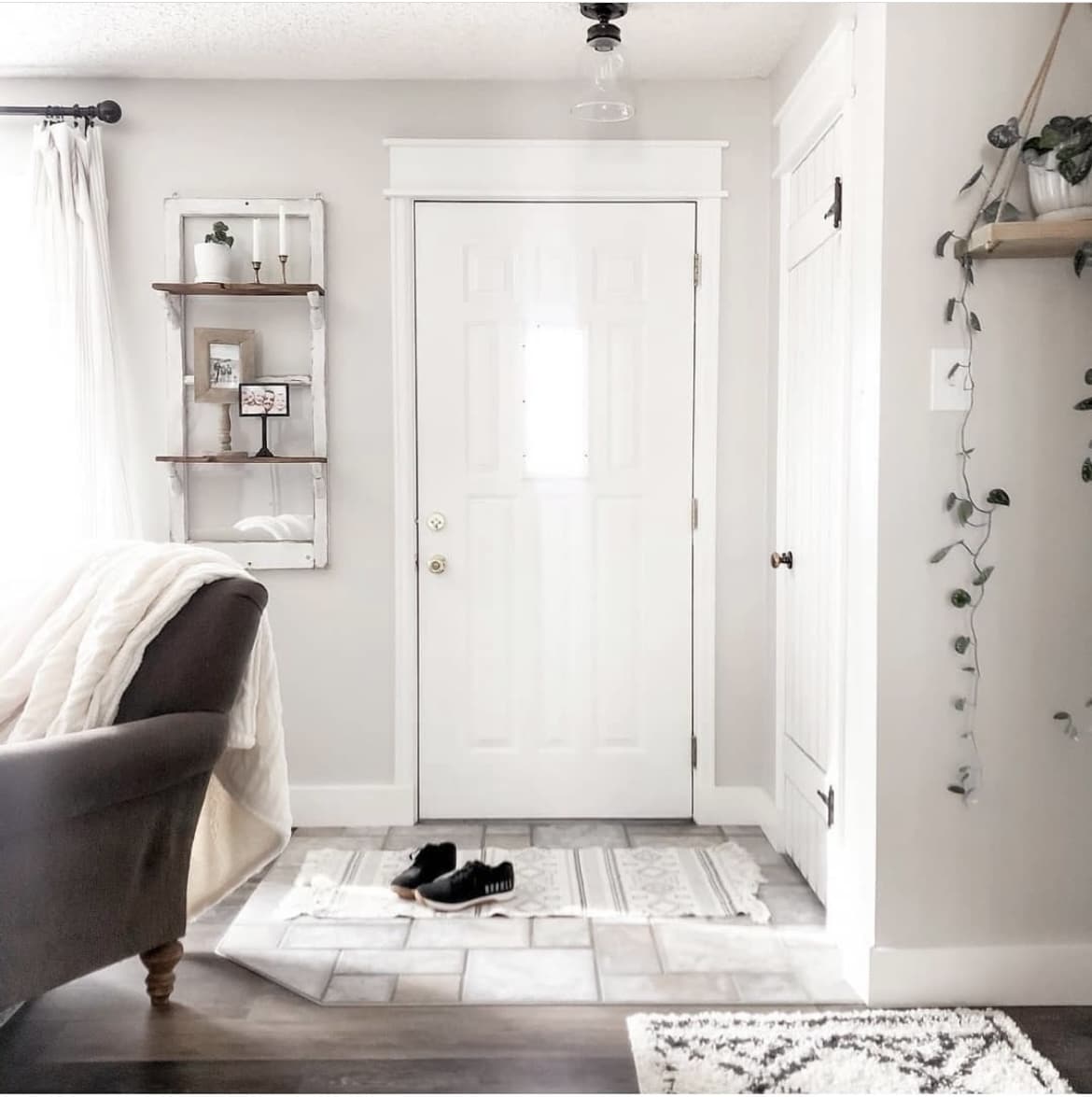
19. Create A Beautiful Entryway Flow With A Long Runner Rug
Decorate a long and skinny hallway with a runner to add texture and warmth to the space.
Choose a design that fits in with the rest of your interiors. A jute runner feels warm and cosy but is also very practical and hard wearing.

20. Use Artwork And Lighting to Define The Space
Subtle additions can make the biggest difference. Visual cues such as artwork and lighting can frame a space without making a big statement.
Take inspiration from the living room pictured above and tactically place a floor lamp behind a sofa.

21. Use Wooden Beams For A Natural Flow Between The Spaces
Invest in your space and alter the structure of it to make it feel more cohesive before decorating.
Exposing or adding wooden beams throughout your home makes one space flow into another and it feels beautifully authentic.

22. Create An Archway Opening
A beautiful way to soften the approach into a living room if the entryway opens into it in such a way is to add an archway. It softens hard lines and creates a subtle, beautiful approach.
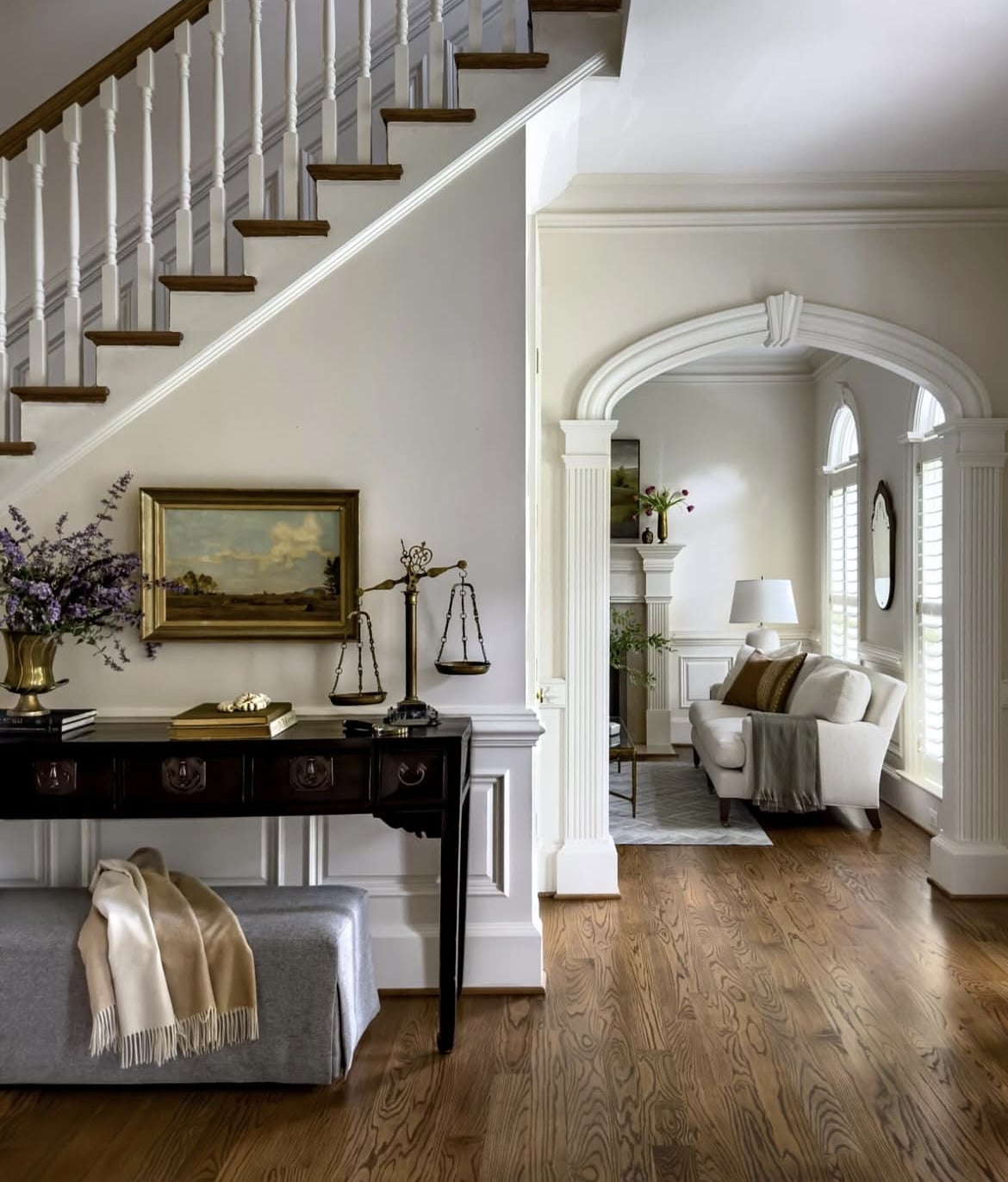
23. Natural Divider
Instead of a console table, build a partial stud wall and elevate to the ceiling with wood slat panelling. This is not only a great way to create a natural divider, but it still allows natural light to flow through it throughout the day.
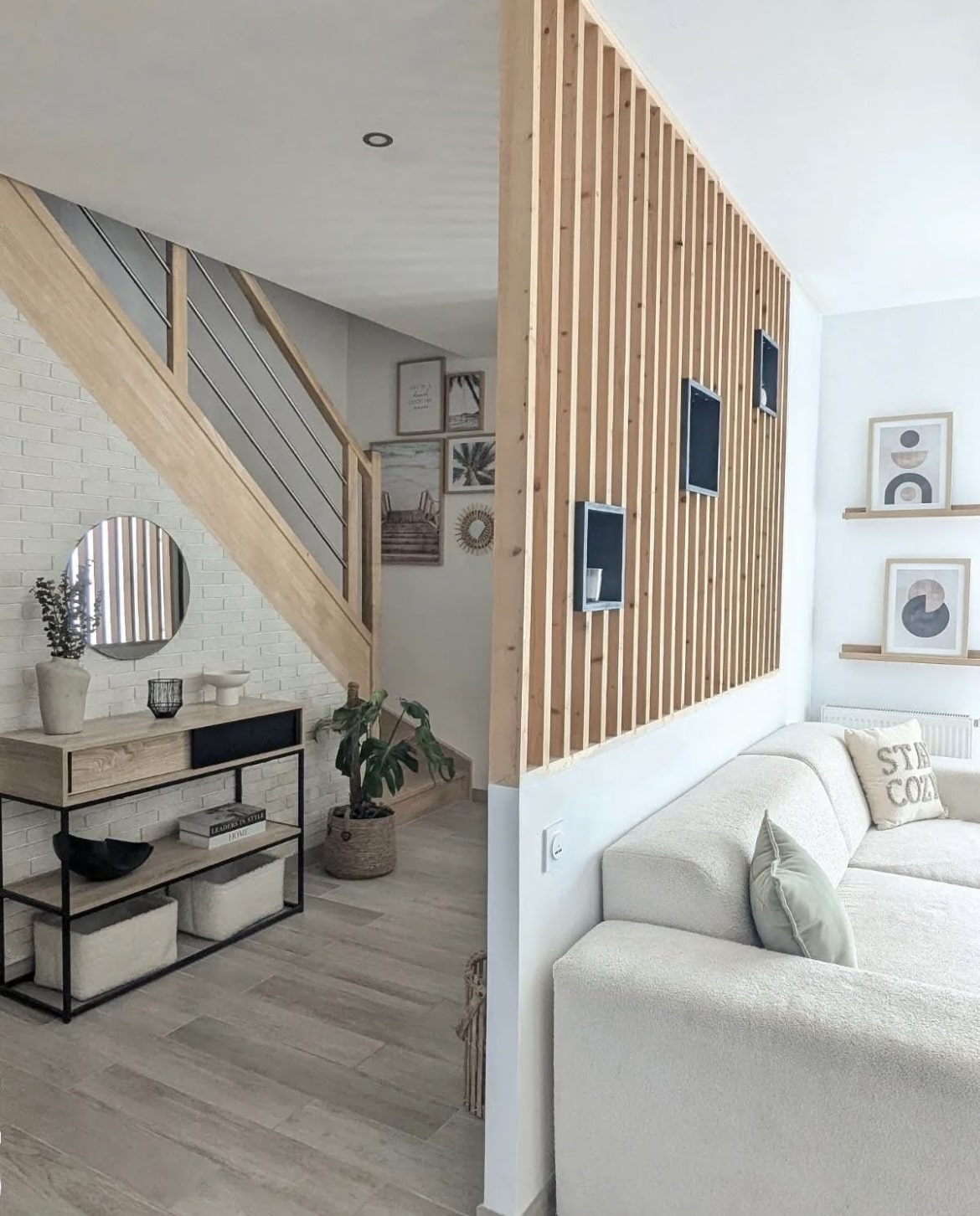
24. Separate With Rugs
If you have a tiny or partial entryway because of how your front door enters into the home, separate the two sections with different rugs.
As I’ve mentioned earlier on, this helps to create a true divide between the two spaces and works perfectly in practice in the image below.
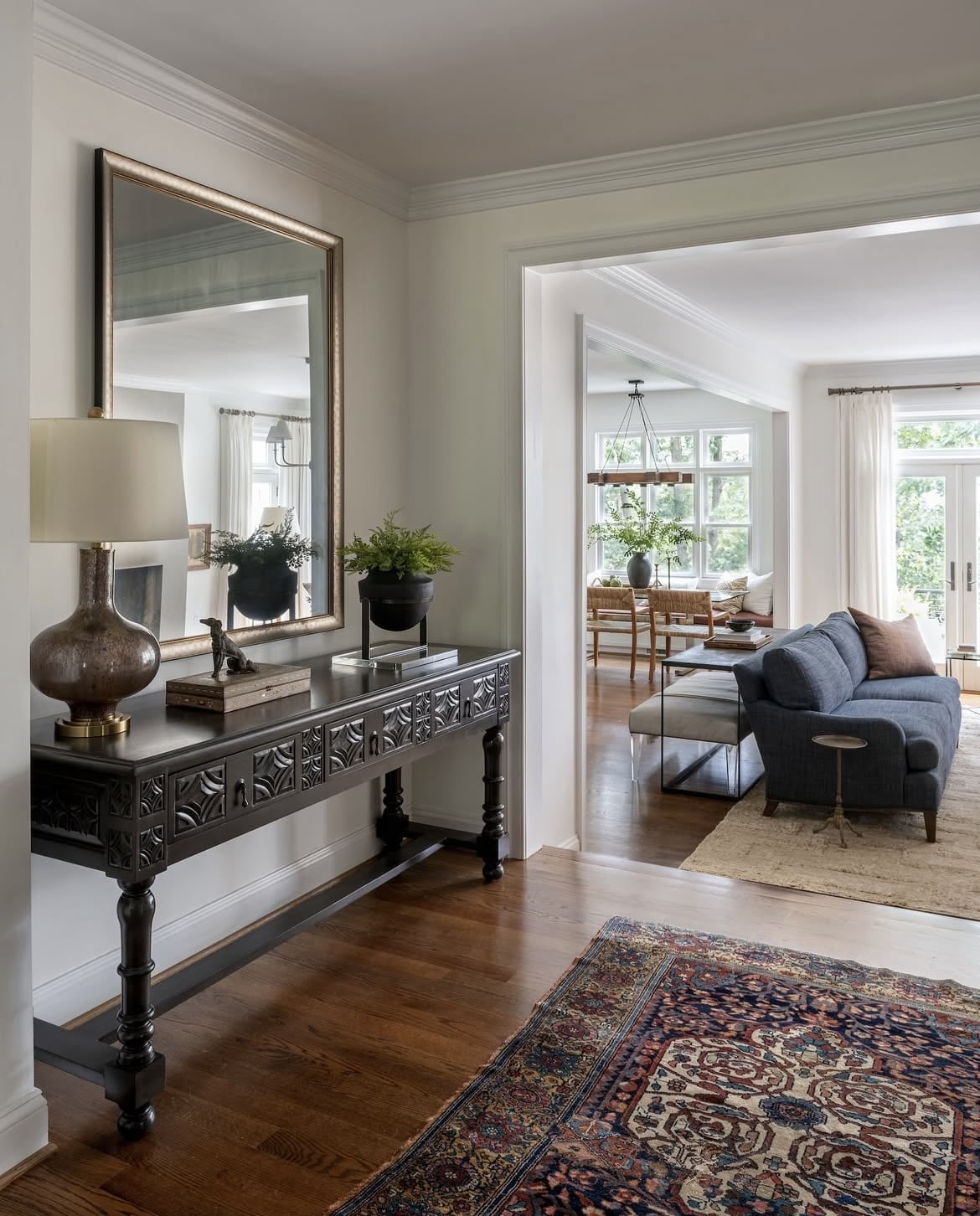
25. Keep The Colour Palette The Same
How beautiful and calm does the space look here?
Using one colour throughout creates this seamless pull from the front door and into the living room. The addition of the panelling adds natural character whilst creating a divide between the transitional area and the living space.
